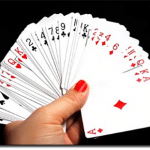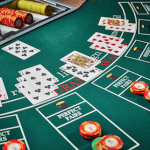A soft hand in blackjack is when you have got an Ace, while a hard hand is when you do not. Below we will break down the differences between soft hands and hard hands in blackjack and give you some strategy advice.
Many online blackjack sites have got great free play modes, where you can master your hard and soft hand blackjack strategy, with this one of the most important skills you should learn. Mathematics plays a big role in best practice when it comes to playing both soft blackjack hands and hard blackjack hands and we will explain more about below.
Introducing hard & soft hands in blackjack
The terms ‘hard’ and ‘soft’ in blackjack refer to whether or not a hand features a flexible Ace. If it doesn’t, the hand is hard; if it does, the hand is soft. New players might not see the significance of such a distinction. An 18 is an 18 and should be played the same way regardless of the specific cards involved, right?
Wrong. Whether a total is soft or hard can have a big impact on correct blackjack strategy, especially when playing with liberal rules for doubling down. Furthermore, the dealer’s treatment of flexible scores is pivotal when it comes to calculating the house edge.
Hard hands blackjack
A hard total is one with no Ace, or where the Ace can only count as one point without busting (e.g. A 6 8 = hard 15). There are 18 possible hard values in a standard blackjack game, starting at four points and finishing at 21.
With the exception of splittable pairs, the basic strategy for hard hands in casino blackjack is rather straightforward:
| Dealer card | ||||||||||
|---|---|---|---|---|---|---|---|---|---|---|
| Player hand | 2 | 3 | 4 | 5 | 6 | 7 | 8 | 9 | 10 | A |
| 5-8 | H | H | H | H | H | H | H | H | H | H |
| 9 | H | D | D | D | D | H | H | H | H | H |
| 10 | D | D | D | D | D | D | D | D | H | H |
| 11 | D | D | D | D | D | D | D | D | H | H |
| 12 | H | H | S | S | S | H | H | H | H | H |
| 13-16 | S | S | S | S | S | H | H | H | H | H |
| 17-21 | S | S | S | S | S | S | S | S | S | S |
Green (H) = Hit
Red (S) = Stand
Orange (D) = Double down (if not allowed, hit)
How to play soft hands in 21
A soft hand total features an Ace (or Aces) that can count as either one point or 11. For example: an Ace and an Eight is called a soft 19 because it can be either 19 points or nine. There are nine valid soft scores in blackjack, the lowest of which is 13 (A 2).
The proper strategic play for soft blackjack hands can vary significantly depending on certain rules. Most Australian blackjack games don’t allow players to double down on soft totals, for instance, while US casinos tend to allow doubling on any two cards. As shown below, according to an eight-deck game where the dealer always stands on 17, the Aussie restrictions make for a much simpler strategy while Vegas rules allow players to be quite aggressive with a soft 17 or lower.
Double down on hard nine, 10, or 11 only:
| Dealer card | ||||||||||
|---|---|---|---|---|---|---|---|---|---|---|
| Player hand | 2 | 3 | 4 | 5 | 6 | 7 | 8 | 9 | 10 | A |
| 13-17 | H | H | H | H | H | H | H | H | H | H |
| 18 | S | S | S | S | S | S | S | H | H | H |
| 19-21 | S | S | S | S | S | S | S | S | S | S |
Double down on any two cards:
| Dealer card | ||||||||||
|---|---|---|---|---|---|---|---|---|---|---|
| Player hand | 2 | 3 | 4 | 5 | 6 | 7 | 8 | 9 | 10 | A |
| 13-14 | H | H | H | Dh | Dh | H | H | H | H | H |
| 15-16 | H | H | Dh | Dh | Dh | H | H | H | H | H |
| 17 | H | Dh | Dh | Dh | Dh | H | H | H | H | H |
| 18 | S | Ds | Ds | Ds | Ds | S | S | H | H | H |
| 19-21 | S | S | S | S | S | S | S | S | S | S |
Green (H) = Hit
Red (S) = Stand
Orange (Dh) = Double down (if not allowed, hit)
Pink (Ds) = Double down (if not allowed, stand)
Dealer hits soft 17 rule
There once was a time when the house always stood pat with 17, regardless of whether or not the hand featured a two-way Ace. Nowadays, however, many land-based casinos instruct their blackjack dealers to hit on soft 17, which has a considerable impact on the odds.
In a regular shoe game with six to eight decks in play, the dealer hitting on 17 adds about 0.22% to the house edge. That’s greater than the overall margin on some online blackjack games, such as Microgaming’s Classic Blackjack Gold Series (0.13% with basic strategy).
In Vegas-style 21, this rule also affects the ideal strategy for doubling down. For example: when the dealer stands on soft 17, most experts would advise against doubling on 11 when the house shows an Ace; but when the dealer hits on soft 17, such a move would be encouraged.



